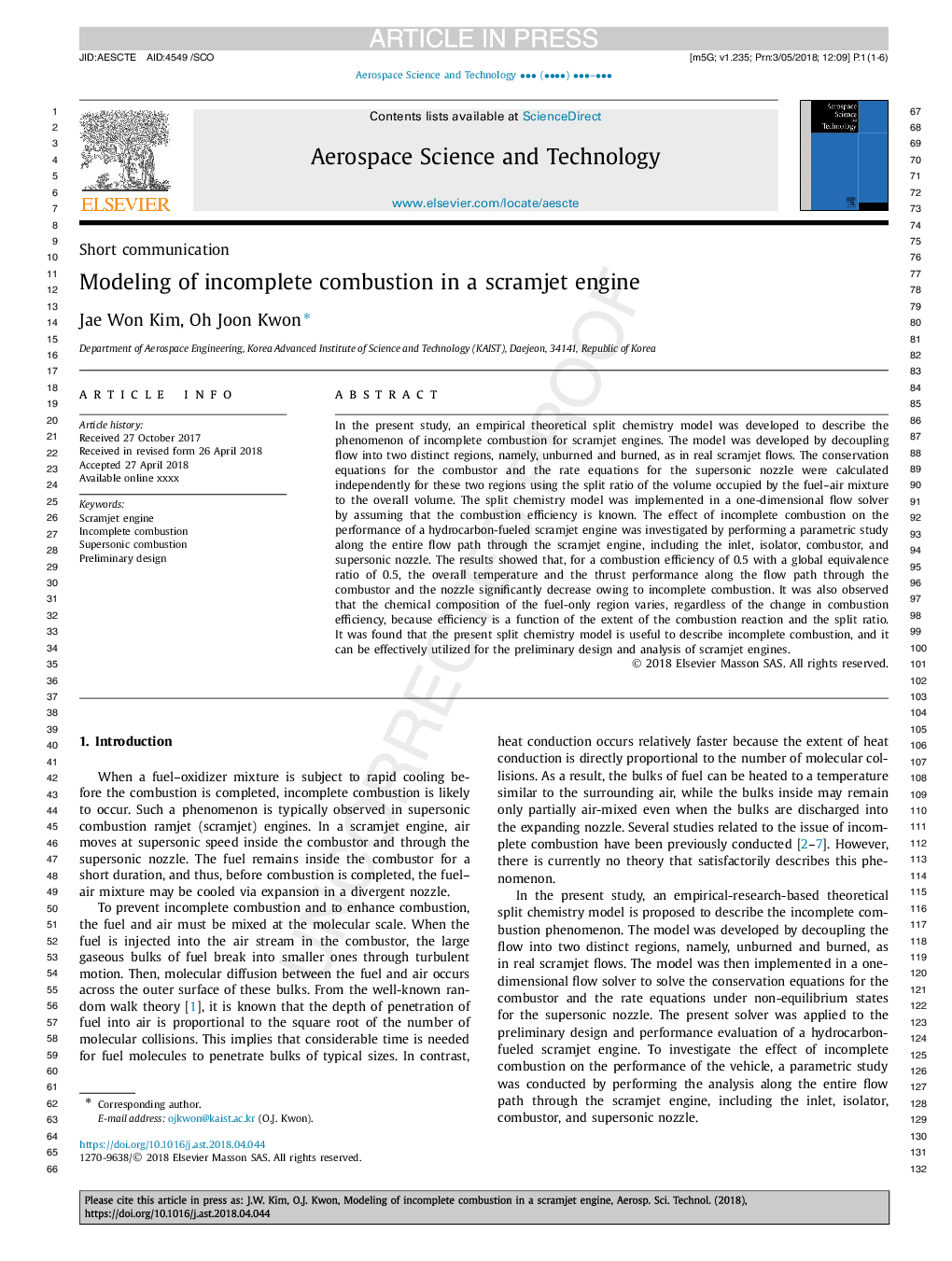| Article ID | Journal | Published Year | Pages | File Type |
|---|---|---|---|---|
| 8057530 | Aerospace Science and Technology | 2018 | 6 Pages |
Abstract
In the present study, an empirical theoretical split chemistry model was developed to describe the phenomenon of incomplete combustion for scramjet engines. The model was developed by decoupling flow into two distinct regions, namely, unburned and burned, as in real scramjet flows. The conservation equations for the combustor and the rate equations for the supersonic nozzle were calculated independently for these two regions using the split ratio of the volume occupied by the fuel-air mixture to the overall volume. The split chemistry model was implemented in a one-dimensional flow solver by assuming that the combustion efficiency is known. The effect of incomplete combustion on the performance of a hydrocarbon-fueled scramjet engine was investigated by performing a parametric study along the entire flow path through the scramjet engine, including the inlet, isolator, combustor, and supersonic nozzle. The results showed that, for a combustion efficiency of 0.5 with a global equivalence ratio of 0.5, the overall temperature and the thrust performance along the flow path through the combustor and the nozzle significantly decrease owing to incomplete combustion. It was also observed that the chemical composition of the fuel-only region varies, regardless of the change in combustion efficiency, because efficiency is a function of the extent of the combustion reaction and the split ratio. It was found that the present split chemistry model is useful to describe incomplete combustion, and it can be effectively utilized for the preliminary design and analysis of scramjet engines.
Related Topics
Physical Sciences and Engineering
Engineering
Aerospace Engineering
Authors
Jae Won Kim, Oh Joon Kwon,
